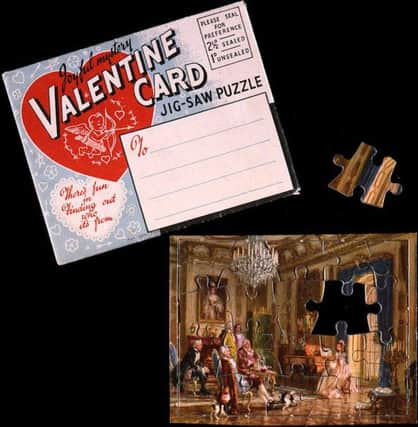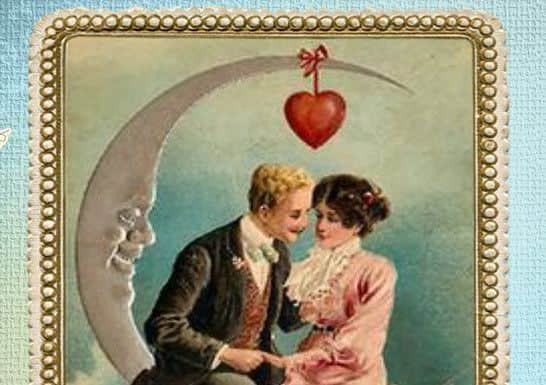The history of the Valentines' day card


This year, the Royal Mail is celebrating the day with an online gallery of historic Valentines cards.
“Valentines” gifts and letters had previously been a sent in upper-class European society but sending them in February became popular in Britain at the end of the 18th century.
Advertisement
Hide AdAdvertisement
Hide AdA card from 1790 is the oldest surviving Valentine’s card in the Postal Museum’s collection. The card is in the form of a fold out “puzzle purse” that reveals romantic verses.


“Puzzle purses” were also known as a courtship envelope, similar to paper fortune tellers today. The puzzle unfolds to reveal the hidden romantic verses.
The oldest printed card in the world dates back from 1797 and is a delicate piece that has been pierced to produce a lace effect in the corners and is decorated with cupids, doves and flowers which were probably hand coloured after printing.
The rise of Valentine’s cards


Between the 1840s and 1890s was the golden age of Valentine’s cards. During this time they were sent in vast numbers, some with scented sachets and others with added musical extras. The most expensive card had up to 700 extras.
The rise of affectionate Valentines cards was not without controversy. The introduction of cheap postage sent shockwaves through prim and proper Victorian society; private correspondence could now be sent cheaply, meaning anyone could express their love freely.
Blackwoods Magazine once wrote: “The post-office system offers a facility for clandestine correspondence which no respectable father or mother on the European side of the Atlantic would think of without a shudder”
Love tokens had been exchanged by the upper and middle classes in large numbers for several centuries, and less commonly before then. It was the popularisation of the practice – driven by the introduction of the penny post – that shocked polite society.
Vinegar Valentines
The growth of Valentines was not without its troubles. Vinegar Valentines soon emerged and were abusive or critical Valentine’s cards designed to humiliate the person who received them. They were usually made up of an insulting drawing and a rude poem and were usually anonymous.
Advertisement
Hide AdAdvertisement
Hide AdInstead of telling of your attractions for them, they would accuse people of being drunk, ugly, obses or stuck-up. Before the introduction of Uniform Penny Postage, the recipient would also have to pay to receive the card, adding insult to injury.
Few ‘Vinegar Valentines’ survive today because most people naturally threw them away rather than preserving them. They later spilled out from Valentine’s Day and were sold all year round.
Stephen Agar, Managing Director of Consumer and Network Access, said: “The introduction of universal postage in the early Victorian era led to a blossoming of romantic communication across the UK. The cards featured in the Postal Museum’s collection epitomise the enduring nature of love and the historical development of Valentine’s Day. Royal Mail is proud to have played a part in delivering these touching messages over the centuries.“
The vintage Valentine’s gallery can be viewed here.